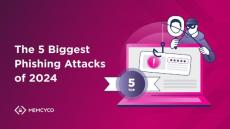- February 2025 (2)
- January 2025 (7)
- December 2024 (7)
- November 2024 (8)
- October 2024 (3)
- September 2024 (11)
- August 2024 (3)
- July 2024 (4)
- June 2024 (4)
- May 2024 (9)
- April 2024 (2)
- March 2024 (8)
- February 2024 (4)
- January 2024 (4)
- December 2023 (3)
- November 2023 (2)
- September 2023 (2)
- July 2023 (3)
What if stopping phishing-related digital impersonation scams were *easier* than falling for them?
Memcyco is a next-generation digital risk protection solution powered by, not only AI, but real-time 'nano defenders'.
Memcyco already protects millions of user accounts, saving global businesses millions in incident remediation costs.
Visit Memcyco.com for a quick demo, or a free fake-site audit.
Now your Risk, Security and Fraud teams can do all of this, while barely lifting a finger:
- SHUT DOWN DIGITAL IMPERSONATION ATTACKS that result in ATO fraud, PII theft and ransomware *before* phishing or 'smishing' messages have even been sent to customers.
- INSTANTLY KNOW when bad actors are researching your website code, to impersonate your site.
- GET ON-THE-SPOT VISIBILITY of exactly which customers clicked a fake link, who visited which fake sites, and which customers had their credentials harvested.
- TURN ATTACKS ON ATTACKERS, using bad actors' own credentials theft-attempts against them, automatically locking them out of your website and customer accounts when they try to use stolen credentials.
- SLASH COSTS & MTTD: with instant fake-site scam detecton and response, for massive incident handling cost savings and workload reduction of up to 85%
Only Memcyco keeps you covered and customers protected during the 'window of exposure', from the moment a fake site or page goes live, and for as long as stolen credentials are available to be used against you.
The bottom line: if it's not real-time, it's not real digital risk protection.























